P. D. Ouspensky (1878-1947)
![]()
All of the people you see, all the people you know, all the people you may get to know, are machines, actual machines working solely under the power of external influences. ... Machines they are born and machines they die. ... But there is a possibility of ceasing to be a machine. It is of this we must think and not about the different kinds of machines that exist.
(P. D. Ouspensky, In Search of the Miraculous, Chapter 1)
![]()
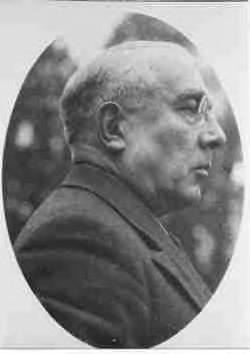
Pyotr Demianovich Ouspensky
Pyotr Demianovich Ouspensky (1878-1947) was a well known Russian philosopher, "Fourth Way" teacher and author during the first half of the 20th Century. He wrote (originally in Russian) three major works, all of which have been continuously in print since being published. They are:
1) Tertium Organum: The Third Canon of Thought, a Key to the Enigmas of the World (First English Edition Published in 1920);
2) A New Model of the Universe: Principles of the Psychological Method in Its Application to Problems of Science, Religion and Art (First English Edition Published in 1931);
3) In Search of the Miraculous: Fragments of an Unknown Teaching (First English Edition Published in 1949).
In my opinion, the most important external influences on Ouspensky's thinking were: 1) the German philosopher Immanuel Kant (1724-1804) , 2) the German philosopher Friedrich Wilhelm Nietzsche (1844-1900), 3) the Greek Neoplatonic philosopher Plotinus (204-270 A.D.) and 4) the Armenian mystic Georges Ivanovich Gurdjieff (1877-1949).
Kant
Kant's influence on Ouspensky was primarily epistemological. Specifically, Ouspensky accepted the doctrine which Kant referred to as the Transcendental Aesthetic. In this doctrine, Kant argued that all of our sensory experience is organized and interpreted based upon certain innate structures contained within our own mind. Our perceptions are understood in accordance with certain a priori intuitions of space and time. Furthermore, these intuitions are best described as being a sophisticated mathematical system. Therefore, it should not be surprising that so much of our thinking concerning the nature of the physical world has been successfully described in accordance with mathematical principles, many of which were discovered long before the physical phenomena they described.
There are many examples in theoretical physics where newly discovered physical phenomena have been explained by the use of mathematical functions that were developed many years prior to the discovery of the phenomena.
1) Albert Einstein's General Theory of Relativity (1915) makes extensive use of the non-Euclidian geometry developed by German mathematician Bernhard Riemann (1826-1866) in the middle of the 19th Century. Without Riemann Geometry, Einstein would not have been able to rigorously describe his vision that gravity produces its effects through a warping of the fabric of space and time.
2) Werner Heisenberg's Theory of Quantum Mechanics (1925) could not have been properly described without the use of matrix algebra that had been developed many years previously by German mathematician Carl Friedrich Gauss (1777-1855).
3) Both modern String Theory (1968) and M Theory (1995) make extensive use of the Gamma Function which was first discovered by Swiss mathematician Leonhard Euler (1707-1783 ) in the 18th Century.
Based on the above examples, it definitely seems that mathematical discoveries usually occur long before any use is found for them in the physical world of the senses. Kant explains this by asserting that mathematical ideas do not derive from sensory experience but rather are obtained by introspection of the human mind. This view is called rationalism and was advocated by many philosophers before Kant such as Plato, Descartes (1596-1650), Spinoza (1632-1677) and Leibnitz (1646-1716).
Nietzsche
The German philosopher, Friedrich Nietzsche, primarily influenced Ouspensky in two areas.
Human Suffering:
The first area involved Nietzsche's theory of suffering. To Nietzsche, the principal hope for transforming ordinary man to a man of higher consciousness which he called the "Overman" or "Ubermensch," was through "suffering." In his book Beyond Good and Evil, Nietzsche writes:
The discipline of suffering, of great suffering – do you not know that only this discipline has created all enhancements of man so far? That tension of the soul in unhappiness which cultivates its strength, its shudders face to face with great ruin, its inventiveness and courage in enduring, preserving, interpreting, and exploiting suffering, and whatever has been granted to it of profundity, secret, mask, spirit, cunning, greatness – was it not granted to it through suffering, through the discipline of great suffering? ...
... The spiritual haughtiness and nausea of every man who has suffered profoundly – it almost determines the order of rank how profoundly human beings can suffer – his shuddering certainty, which permeates and colors him through and through, that by virtue of his suffering he knows more than the cleverest and wisest could possibly know, and that he knows his way and has once been at home in many distant, terrifying worlds of which you know nothing – this spiritual and silent haughtiness of the sufferer, this pride of the elect of knowledge, of the initiated, of the almost sacrificed, finds all kinds of disguises necessary to protect itself against contact with obtrusive and pitying hands and altogether against everything that is not its equal in suffering. Profound suffering makes noble; it separates.
Nietzsche's views on suffering bear some similarity to those of another man who also greatly influenced Ouspensky -- the Russian mystic Georges Ivanovich Gurdjieff. Gurdjieff went even farther than Nietzsche in defining what types of suffering are best for the development of man. To Gurdjieff, "Intentional Suffering" was best for the transformation of man.
Eternal Recurrence:
Nietzsche's most important influence on Ouspensky was teleological. Specifically, Ouspensky accepted the Nietzschean Doctrine of Eternal Recurrence (Eternal Return).
Nietzsche thought of the Cosmos as an eternal process of coming to be and passing away. This Cosmos possesses infinite time but only a finite number of events; eventually the events will recur again and again infinitely. The process has no beginning or end. Eventually every combination of matter and energy will be realized and repeated an infinite number of times.In Nietzsche's view, all humans will repeat their lives exactly down to the smallest detail. Each person will be born again, live their whole life again, and die again. One's whole life will be re-lived exactly as it had been previously lived. Accordingly, if the Doctrine of Eternal Recurrence is true, all humans have lived their lives infinitely many times already, and will live them infinitely many times again.
Ouspensky was obsessed with this doctrine for his entire life. In 1947, shortly before his death, he had his students chauffer him around to those places where he had previously lived and worked in England. It was as if he wanted to refresh his memory just one last time before he died. In his next incarnation or recurrence, Ouspensky desperately wanted to be able to remember the places where he had been and the things he had done in this life!
Plotinus
TBD
Gurdjieff
The fourth man to exert a profound influence on Ouspensky was Georges Ivanovitch Gurdjieff, a mystic from the Caucasian Region of the Russian Empire. The teachings of Gurdjieff are far too extensive to reproduce here. However, I recommend the excellent introductory article by the San Francisco State University philosopher, Jacob Needleman, entitled: G. I. Gurdjieff and His School.
P. D. Ouspensky, then a resident of St. Petersburg, first encountered Gurdjieff during a visit to Moscow in April 1915. Gurdjieff had read Ouspensky's book Tertium Organum (published in Russian in 1912), agreed with much of it and had long sought an opportunity to meet with the author. Ouspensky was much impressed with Gurdjieff's knowledge and was intrigued with the psychological practice or "Work" espoused by Gurdjieff. After several meetings in Moscow, Gurdjieff visited Ouspensky in St. Petersburg in the autumn of 1915. Gurdjieff proposed to establish a group in St. Petersburg similar to the one he had already established in Moscow. He sought Ouspensky's help in putting together such a group.
Ouspensky, a very independent person, was initially reluctant to participate in such a group. After some discussion, Ouspensky was finally persuaded to help but under the following conditions:
1) Ouspensky, a published writer, would have permission to write about Gurdjieff's teaching to the extent to which he (Ouspensky) fully understood such teachings.
2) The individuals selected for the St. Petersburg group would all be vetted by Ouspensky. No one would be taken into the group without his consent nor remain in the "Work" without his consent. Ouspensky later referred to this arrangement as the "St. Petersburg conditions."
The St. Petersburg Group
 P. D. Ouspensky (1878-1947) |
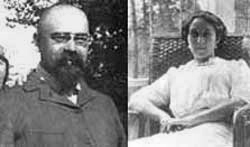 Dr. Leonid Stjoernval (1861-1938) and His Wife Elizabeta (d. 1972) |
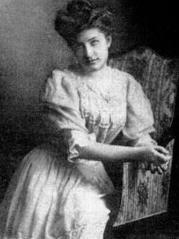 Anna Ilinishna Butkovsky (1885-aft. 1978) |
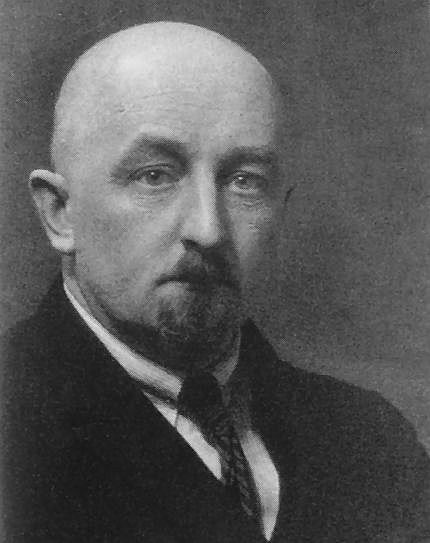 Thomas de Hartmann (1886-1956) |
Olga Arkadievna de Hartmann (1885-1979) |
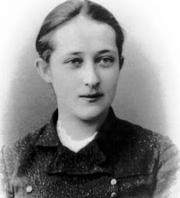 Sophia Grigorievna Ouspensky (1874-1963) |
The first six members of the St. Petersburg group were all hand-picked by Ouspensky. It appears that these first six members all had been previously connected with the Theosophical Society of St. Petersburg. Although the St. Petersburg group eventually had more than 30 members, these first six members constituted a sort of "inner circle" of individuals more knowledgeable and enthusiastic than the rest. Many years later, after Ouspensky's death and after he had read the manuscript of In Search of the Miraculous, Gurdjieff is purported to have said that this "inner circle" in two years made more progress in the "Work" than Gurdjieff's French groups had been able to make in over 20 years!
In 1916, The "inner circle of St. Petersburg" was composed of the following six members:
1) P. D. Ouspensky, age 38, the most knowledgeable and articulate of all of Gurdjieff's pupils. Born in Moscow in 1878; he died in London in 1947. Gurdjieff's nickname for him was "Wraps up the Thought."
2) Anthony Charkovsky, age 50, a civil engineer with a knowledge of occult and mystical literature that rivaled Ouspensky's.
3) Dr. Leonid Stjoernval, age 55, a Finnish Alienist physician and hypnotist. He and his wife, Elizabeta (d. 1972), went to France with Gurdjieff where he remained a devoted pupil until his death shortly before the outbreak of World War II. Gurdjieff's nickname for him was "Mean."
4) André Zakharoff, age 37, a very intelligent railway engineer and mathematician. He died in Russia of smallpox in 1919. Gurdjieff's nickname for him was "Baba" (meaning peasant woman in Russian).
5) Nicholas R., age 68, a patient of Dr. Stjoernval and a member of the Russian Duma. Gurdjieff's nickname for him was "Jubilant Old Man."
6) Anna Ilinishna Butkovsky, age 31, a classical pianist and, at that time, the girl friend of Ouspensky. After her relationship with Ouspensky went sour, she married an Englishman, Charles Hewett, before leaving Russia late in 1917. She later joined one of Gurdjieff's Paris groups. Gurdjieff's nickname for her was "Wavering."
Although not a member of the inner six, another member of the St. Petersburg Group would later become one of Gurdjieff's most important students; she was Sophia Grigorievna (1874-1963) a divorcee with an adult daughter from her first marriage. She was a friend of Ouspensky who introduced her to Gurdjieff in 1915. She eventually replaced Anna Butkovsky as Ouspensky's girl friend and he married her sometime in the late 1917 - early 1918 timeframe.
In December 1916, two more notable individuals joined the St. Petersburg Group; they were the composer Thomas Alexandrovich de Hartmann and his wife Olga Arkadievna (nee de Shumacher). The St. Petersburg group met on a somewhat regular basis from about January 1916 until after the Tsar's abdication in March 1917. Gurdjieff subsequently removed to the town of Essentuki in the Caucasus. In July 1917, the "inner six" together with several other members of the St. Petersburg group joined Gurdjieff in Essentuki. The group remained there, more or less intact, until August 1918. At that time, Gurdjieff lead most of the group out of Essentuki and, after many adventures, finally settled in Tiflis, the capital of Georgia. Ouspensky, his new wife Sophia Grigorievna, and his wife's grown daughter by a previous marriage, remained behind in Essentuki. Although Ouspensky and Gurdjieff would again meet and reconcile in Constantinople in July 1920, their relationship would never again be close. Finally, in May 1921, Ouspensky left for London where he ultimately set up an entirely separate teaching. In total, the "inner circle" of the St. Petersburg group worked directly with Gurdjieff for only slightly more than two years.
Breach with Gurdjieff
In early 1924, Ouspensky officially announced his separation from Gurdjieff; henceforth, his teaching activities were conducted entirely independently from those of Gurdjieff. The exact reasons for this breach between teacher and pupil are unknown. A student of both Ouspensky and Gurdjieff and probably the one person who might best understand the relationship between these two men, Lord Pentland (1907-1984), has written the following:
As early as 1918, however, Ouspensky began to feel that a break with Gurdjieff was inevitable, that "he had to go"—to seek another teacher or to work independently. The break between the two men, teacher and pupil, each of whom received much from the other, has never been satisfactorily explained. They met for the last time in Paris in 1930 [Sic].
(Quote is taken from Lord Pentland's entry re P. D. Ouspensky in The Encyclopedia of Religion, New York: Macmillan, 1987, Vol. 11, p. 143.)
Based on other sources than Lord Pentland, I conclude that the final face-to-face meeting between Ouspensky and Gurdjieff took place in July 1931 at the Cafe Henri IV in Fontainebleau. What took place at this last meeting between the two men is unknown; neither man would ever speak about what transpired. What is known is that a few weeks later, upon Gurdjieff's orders, Ouspensky's estranged wife, Sophia Grigorievna Ouspensky (1874-1963), left Gurdjieff's manor house (the Prieuré) near Fontainebleau and rejoined her husband in England; she remained with him in both England and America until 1945.
Ouspensky conducted his own teachings independently of Gurdjieff, in both England and America, from 1924 until the time of his death in 1947. In 1931, at the time of his last face-to-face encounter with Gurdjieff at Fontainebleau, Ouspensky had approximately a thousand pupils in England and was enjoying substantial financial success. At the same time, Gurdjieff's work was at a low ebb; he had only about 20 pupils in France, was almost bankrupt and was about to lose the Prieuré, his chateau near Fontainebleau. After his removal to Paris in 1932, Gurdjieff was still teaching only a relatively small group of students compared to Ouspensky.
During World War II, Ouspensky and his wife took refuge in the United States and soon established a sizeable following in New Jersey and New York. However, Ouspensky, in ill health and without his wife, returned to England in 1945 where he subsequently died in 1947. After his death, many of Ouspensky's English and American students, at the urging of Madame Ouspensky, went to Paris to join Gurdjieff during the last two years of his life (Gurdjieff died in 1949). This influx of new students at the end of his life gave the appearance that Gurdjieff's teaching was a thriving concern. In reality, most of his last pupils were former students of Ouspensky, the most notable of which were John G. Bennett and John Sinclair (Lord Pentland).
Fragments of an Unknown Teaching
Ouspensky had studied under Gurdjieff during the period 1915-1924. His understanding of the Gurdjieff teachings during this period was brilliantly summarized in a book to which he originally gave the title: Fragments of an Unknown Teaching. This book was ready for the publishers as early as 1925. Inexplicably, Ouspensky refused to allow the book to be published during his lifetime nor would he allow the manuscript to be shown to Gurdjieff. Indeed, it was only after Ouspensky's death in 1947, that his wife, Madame Sophia Ouspensky, against her husband's previously expressed wishes, allowed Gurdjieff to peruse a copy. This occurred during Gurdjieff's last visit to the United States in 1948. Gurdjieff read the manuscript, was very pleased with it and is reported to have said:
Before I hate Ouspensky, now I love him. This is very exact, he tell what I say.
Gurdjieff instructed Madame Ouspensky to publish the book, the only caveat being that he would prefer that his book, Beelzebub's Tales to His Grandson, be published first. Madame Ouspensky immediately took action to publish Ouspensky's book in America. At the last minute, to avoid confusion with another recently published book, Ouspensky's title was changed to In Search of the Miraculous: Fragments of an Unknown Teaching. Since In Search of the Miraculous was first published in 1949, the book has been continuously in print. Indeed, this book is still the primary text for most Fourth Way students and far outsells all of Gurdjieff's books combined!
Ouspensky's Alchemical Teachings
The teachings of Ouspensky from 1924-1947 are far too voluminous to repeat in this short essay. However, those aspects of Ouspensky's teaching contained in his book In Search of the Miraculous, which in my view are of an alchemical nature, are summarized below.
1) Law of Three: In Chapter 4 of his book entitled In Search of the Miraculous, Ouspensky describes Gurdjieff's "Law of Three." This law is synonymous with the alchemical concept of the Tria Principia. The law also bears marked similarities to the dialectic proposed by the Greek philosopher Heraclitus of Ephesus (6th Century B.C.), the German philosopher Georg Wilhelm Friedrich Hegel (1770-1831), the social theorist Karl Marx (1818-1883), and the psychologist Sigmund Freud (1856-1939). Each dialectical theory involves three interactive stages that describe how change or flux occurs in the world.
The following table summarizes these basic ideas:
| Name | Stage of Affirmation | Stage of Negation | Stage Involving Union of Opposites |
|
Tria Principia of Alchemy |
Sulphur - Spirit of Life |
Salt - Base Matter |
Mercury - Connects High and Low |
| Gurdjieff & Ouspensky (Law of Three) | Holy Affirming Force | Holy Denying Force | Holy Reconciling Force |
| Heraclitus (Conflict between Opposites) | Entity | Opposing Entity | Unity (Reconciliation of Opposites) |
| Hegel (Struggle between Opposites) | Thesis | Antithesis | Synthesis |
| Marx (Struggle between Social Classes) | Proletariat (Working Class) | Capitalist Class | Communist Society |
| Freud (Struggle within the Human Mind) | Ego (Conscious Self) | Id (Unconscious Self) | Superego (Conscience) |
2) Law of Seven: In Chapter 5 of In Search of the Miraculous, Ouspensky describes Gurdjieff's "Law of Seven." Gurdjieff taught that there was a fundamental dynamic process whereby both the Cosmos (the macro-level) and individual lives (the micro-level) of people here on Earth were in a continuous state of transformation. The so-called "Absolute" was the fundamental source of all creation. Emanating from the Absolute, the process of cosmic creation evolves according to an ordered sequence of increasing complexity and density. This process follows a law involving the seven note Greek musical scale known on the macro level as the “Ray of Creation.” The universe as a whole comprises many such emanations from the Absolute. Unlike the Pythagorean model (see below), Gurdjieff's scheme involved a relatively modern, sun centered view of the astronomical structure of the Cosmos. A diagram representing Gurdjieff's “Ray of Creation” for the planet Earth is depicted in the table shown below.
This Gurdjieff teaching is almost certainly a slightly updated form of the basic teachings of the Ionian Greek Philosopher Pythagoras of Samos (569-475 B.C.) and his followers in the Pythagorean School. While only fragments of the teachings of the Pythagoreans survive, we do know that they taught that the universe was essentially an organic whole which they called the "Cosmos." The Pythagoreans also taught that the underlying structure of the Cosmos was mathematical in nature and that the principles of the musical octave constituted the key to understanding this mathematical structure. Pythagoras and his successors, like most people in the world until the 17th Century A.D., believed in an Earth-centered universe. In the 4th Century B. C., the philosopher Plato, a Pythagorean initiate, defined the basic structure of this Cosmos as a system of eight concentric shells with the Earth placed at the center of the shells. The outermost shell, a dodecahedron, was the realm of the fixed stars. Each of the other seven shells was considered to be a sphere associated with three things: 1) a note from the Ionian Greek musical scale (known as the Lydian scale in the 6th Century B.C.), 2) a planetary body which moved around the Earth in a circular orbit, and 3) a particular Muse (one of nine Greek goddesses who preside over the arts and sciences). The entire system was called the "Harmony of the Spheres." In all, this cosmic system had nine levels counting the earth as the first level. The outermost level was the realm of the fixed stars which did not orbit the earth. No musical note was associated with the realm of the fixed stars.
The following table presents a model of the cosmic structure proposed by Pythagoras and Plato compared with the structure proposed by Gurdjieff and Ouspensky:
|
Pythagoras and Plato - Harmony of the Spheres |
Gurdjieff and Ouspensky - Ray of Creation |
|
Muse (Goddess) |
Domain of the Muse |
Musical Interval (Ionian or Lydian Scale) |
Planetary Sphere |
Musical Note of Octave (Modern Ionian Major Scale) |
# of Laws Applying to that Level |
Cosmic Level |
|
|
|
|
|
|||||
|
Urania |
Astronomy |
|
9. Fixed Stars* |
||||
|
Polyhymnia |
Sacred Poetry |
|
8. Saturn |
Do |
1 |
Absolute |
|
| Semitone** |
First Shock** |
||||||
|
Euterpe |
Music |
|
7. Jupiter |
Ti |
3 |
All Worlds |
|
| Tone | |||||||
|
Erato |
Love Poetry |
|
6. Mars |
La |
6 |
All Suns |
|
| Tone | |||||||
|
Melpomene |
Tragedy |
|
5. Sun |
So |
12 |
Sun |
|
| Tone | |||||||
|
Terpsichore |
Sacred Dance |
|
4. Venus |
Fa |
24 |
All Planets |
|
| Semitone*** | Second Shock*** | ||||||
|
Calliope |
Epic Poetry |
|
3. Mercury |
Mi |
48 |
Earth |
|
| Tone | |||||||
|
Clio |
History |
|
2. Moon |
Re |
96 |
Moon |
|
| Tone | |||||||
| Thalia |
Comedy |
1. Earth |
Do |
1 |
Absolute |
*The level of the fixed stars was not a sphere. The Greek philosopher Plato (a Pythagorean initiate), in his dialog called the Timaeus, makes the assertion, in an encrypted format, that the fixed stars were arranged on the surface of a gigantic cosmic dodecahedron! In 2003, this view regarding the outer structure of the universe received scientific support from the astronomical community.
**A critical point in the Gurdjieff process is the "First Conscious Shock," between Do and Ti -- a semitone in the Pythagorean system associated with Polyhymnia (sacred poetry) and Euterpe (music). In the Gurdjieff system, only "Conscious Labor" can provide the energy necessary to pass through this critical point in the development of an individual person.
***A second critical point in the Gurdjieff process is the "Second Conscious Shock," between Fa and Mi -- a semitone in the Pythagorean system associated with Terpsichore (sacred dance) and Calliope (epic poetry). In the Gurdjieff system, "Intentional Suffering" is the best way to provide the energy necessary to pass through this critical point in the development of an individual person.
Significance of Ouspensky's Teachings
Perhaps the best summary of the significance of Ouspensky's contributions to consciousness studies has been given by the American philosopher Jacob Needleman:
Ouspensky’s book Tertium Organum had been published with considerable success in England in the early 1920s and had established his reputation as a writer about metaphysical subjects. ... What distinguishes this book is not only the force of Ouspensky’s vision but the fact that it was rooted in his own experience, rather than solely from reflecting on traditional ideas. Thus Ouspensky may be considered a modern pioneer in what can be called “inner empiricism,” a mode of philosophizing about the kind of metaphysical issues which scientific thought has largely dismissed, but which retains the scientific attitude that seeks to base all theory on actual experience and carefully conducted experiments. Ouspensky’s inner world was his own metaphysical laboratory.
Of particular significance here, however, is the fact that the book, written before Ouspensky became a pupil of Gurdjieff, contains numerous ideas and formulations which later appear intact in Ouspensky’s account in In Search of the Miraculous as elements of the Gurdjieff teaching. This raises the question of the kind of help that Gurdjieff offered to those who followed him and shows the exceptional degree to which Ouspensky was prepared for such a teaching. In Ouspensky’s case, there is no doubt that he opened himself to the vast body of new ideas which Gurdjieff brought forth. But it is also clear that, at the same time, he retained a great deal of his own previously acquired understanding of the human situation and the universal order. ... In Search of the Miraculous does not, therefore, represent a rupture in Ouspensky’s thinking so much as an extraordinary flowering of it, whereby it became, so to say, an instrument serving a new aim and the vehicle for another quality of energy. He began as an imposing thinker, and after Gurdjieff he remained a powerful thinker who has also become a different kind of man.
![]()